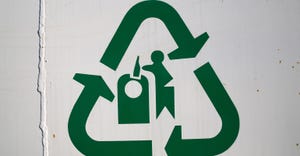May 1, 2004
Kate McGinn XL Insurance Exton, Pa. www.xlinsurance.com
TODAY'S HIGH INSURANCE PRICES can give waste companies a bad case of sticker shock. The high cost of primary casualty coverage, which includes workers' compensation, auto liability and general liability, in particular, can leave businesses wondering how to plan their financial futures.
New York-based organizations Marsh Inc., an insurance brokerage firm, and the not-for-profit Risk & Insurance Management Society (RIMS) recently surveyed 1,433 U.S. businesses and government entities on insurance spending. Their study, “The Cost of Casualty 2004,” concluded that for every $1,000 of revenue, U.S. companies spend an average of $2.32 on insurance and other risk management measures to manage their workers' compensation, auto and general liability exposures.
Workers' compensation protection, on average, accounts for 63 cents of every dollar the industry spends to manage its primary casualty exposures, according to the study. Workers' compensation costs averaged $1.46 per $1,000 of revenue, while general liability costs averaged 55 cents and auto liability averaged 31 cents.
Additionally, the study found that while insurance costs were increasing, many companies were opting for larger retentions, or deductibles, to minimize higher premium costs in the future. As primary casualty risk costs rose by 6.9 percent, companies' retentions increased by 17.7 percent for workers compensation, 14 percent for general liability and 12.5 percent for auto liability.
The study illustrates that small employers pay nearly 16 times more in insurance expenses than the largest companies. For example, firms with more than $10 billion pay $1.38 per $1,000 of revenue for casualty premiums, while companies with $200 million pay $21.75 per $1,000 of revenue. According to the study, “large employers generally enjoy substantial economies of scale in the purchase of insurance and use of other risk mitigation approaches to address their primary casualty exposures.”
Regardless of business size, the study says, approximately 80 percent of every primary casualty dollar pays for forecasted losses and related expenses. A company's costs are greatly influenced by how insurers view the business's efforts to forecast and manage its risk. Therefore, a small firm with effective planning can achieve lower costs than a larger company with poor risk management.
Historically, workers' compensation has accounted for the largest piece of casualty risk costs. According to the study, it remains the primary catalyst for addressing the factors attributing to high insurance prices. This includes pursuing safety and wellness programs that aim to prevent injuries and illnesses, and researching more effective ways to track and manage claims and fund exposure. Organizations need to pinpoint what's driving their insurance costs and invest in approaches that yield the best results, the report concludes.
When risks arise, larger companies generally will have more resources at their disposal. So especially for small businesses, it is essential to take extra measures and prepare comprehensive risk management portfolios.
You May Also Like


